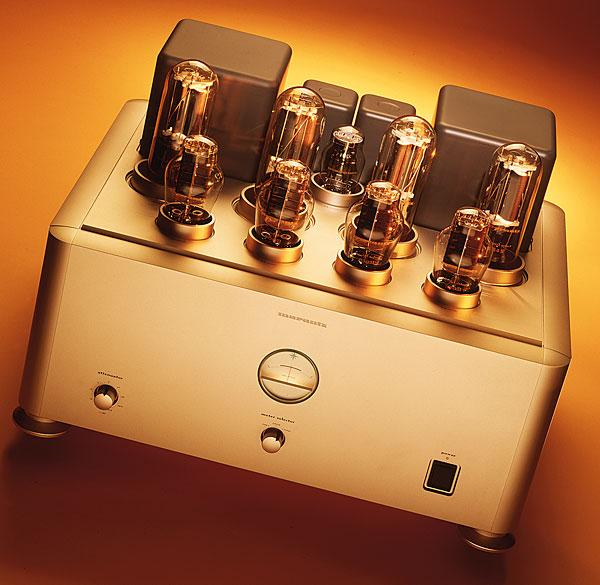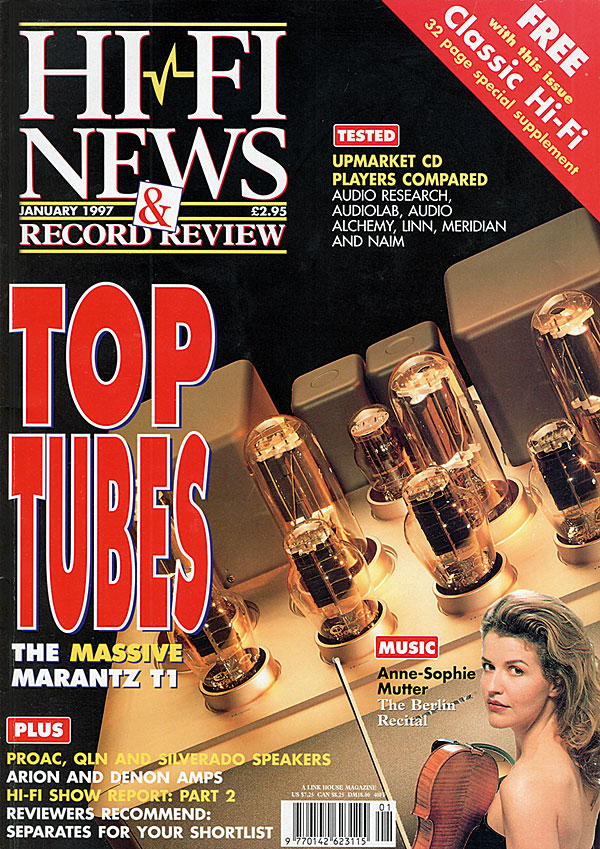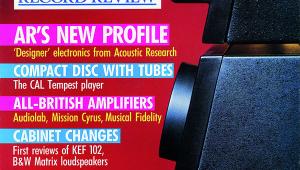Marantz Project T-1 Amplifier

 Classic tubes meet modern tech in the £30,000 Project T-1 monoblocks. Is this Marantz's ultimate amplifier, asks an awestruck Ken Kessler
Classic tubes meet modern tech in the £30,000 Project T-1 monoblocks. Is this Marantz's ultimate amplifier, asks an awestruck Ken Kessler
Contemplating the Project T-1 power amplifiers from Marantz, I realise that nothing in hi-fi should surprise us any more. If, in 1990, someone had told you that, by 1997, the hi-fi community would be clamouring for single-ended triodes and horn systems, that Quad and McIntosh and Marantz would reissue their valve classics, that Mobile Fidelity would open a new LP pressing plant and that Krell and Audio Research would introduce integrated amps, you'd have had that someone committed.
Yet all of this has come to pass. So I'm not surprised that one of the greatest amplifiers on earth comes from a division of Philips, a mass-market-oriented, Japanese/Dutch corporation, big enough to have purchased Argentina just with what it must have lost from DCC.
But that division happens to be Marantz. If there's a single Japanese manufacturer capable of taking on the extreme high-end, it could only be Marantz. After all, this is the company sharp enough to employ the legendary Ken Ishiwata. So, the source of the Project T-1 Monaural Tube Power Amplifier isn't a total surprise. However, what is a surprise is the amp's performance.

Smart Glass
Brainchild and swansong of Marantz engineer Mr Kosaku Ueno, the Project T-1 is as outré as the sort of insanityware which comes from a typical two-men-in-a-garage operation. Only they don't have a board of directors to appease...
Its initial impact is such that you know you're in the presence of something very special, just because it looks like no other amplifier that came before it. Not counting the valve cage, a single T-1 measures 556x495x496mm (whd) and it weighs a backbreaking 65kg. A pair of these monoblocks occupies a lot of floor space for a 50-watter, but it's worth it just to see the faces of bowled-over audiophiles.
Before you even get to the luscious array of glass, the front panel catches your eye for its single 'retro' touch, a round meter recalling elder Marantz designs. This one isn't needed for tube biasing as this is an automatic function in the Project T-1, but it does monitor tube behaviour and it looks great. I'd want it even if it didn't do a thing. Below it is a selector to choose between monitoring the gain stage tubes (V1 and V2), the driver tubes (V3 and V4) or the output tubes (V5 and V6). To the right is the on/off rocker, while the extreme left contains a gain control.
Cylinder Head
No less inspiring is the back, nearly filled with a vast heatsink, a set of massive terminals and XLR-type balanced-only connection to source or preamp. As the Marantz CD-12 KI Signature CD playing system has proper XLR outputs, I ran the review set-up completely balanced without having to use a separate preamp. But you want to know about the nine cylinders on top, right?
Ueno-San either has a great sense of humour, or he just understands tube psychotics better than most: the T-1 uses both 300Bs and 845s. The real dig at the SET enthusiasts, though, is this little nugget: the 300Bs aren't the output tubes. Heh, heh, heh. But note that the full lineup consists of a 5U4G, four 845s and a quartet of 300Bs. Still, I'll bet there are hundreds of 300B geeks running around shouting, 'See? Marantz uses 300B output tubes!'.
Instead, the Project T-1 uses one pair of 300Bs as the input stage, the second pair as a pre-driver stage and two of the 845s as the final output stage, to deliver a claimed 50W into an 8ohm load (with a maximum of 75W attainable within spec).
The amp is transformer-coupled throughout, and numbers freaks will note that each chassis houses seven transformers, three high-inductance filter chokes and 11 power supply stages. Solid-state rears its head in the form of a microprocessor which monitors the amplifier's status and prevents overload during turn-on, and it protects the amplifier if you forget to attach a speaker load.
The tube filament power is derived from solid-state constant-current supplies, for longer life and stability, allowing Marantz to claim with a straight face that a T-1 should be '...as reliable as a solid-state amplifier'. The T-1 runs in push-pull mode, Class A all the way, balanced throughout and without negative feedback. That solitary 5U4G is the PSU rectifier for the first two stages, while the remaining pair of 845s service the other pair of 845s, Marantz having decided that solid-state rectifiers are too noisy.


















































